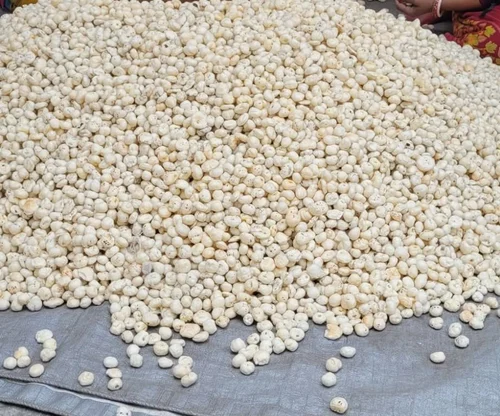Foxnuts, referred to as makhana or lotus seeds, are gaining a global reputation due to their dietary advantages and flexible culinary packages. Exporting foxnuts involves a based and efficient delivery chain to ensure exceptional compliance with worldwide standards and well-timed shipping. This weblog explores a foxnut exporter unique delivery chain process, from sourcing to final distribution.
Sourcing and Procurement
a) Cultivation and Harvesting
Foxnuts are usually cultivated in the Indian states of Bihar, Uttar Pradesh, and Madhya Pradesh. Farmers grow foxnut plant life in our bodies, including ponds and wetlands. The harvesting process consists of:
- Collecting mature seeds from water bodies.
- Cleaning and drying the seeds underneath sunlight.
- Roasting them at precise temperatures to do away with the tough outer shell.
b) Quality Selection
After harvesting, foxnuts are taken care of primarily based on length, colouration, and texture. Export-excellent foxnuts must meet strict best parameters, which include:
- Uniform size and form.
- Free from impurities and overseas count.
- Proper moisture content to prevent spoilage.
Processing and Packaging
a) Cleaning and Sorting
Once harvested, foxnuts undergo a multi-step cleansing to remove dirt, dust, and residual husk. This includes:
- Air blowers for dirt removal.
- Sieving machines for length grading.
- Manual inspection to ensure superior exceptional.
b) Roasting and Puffing
Foxnuts are roasted at managed temperatures to enhance their crunchiness and shelf life. The puffing technique ensures they maintain nutritional value and preserve the right texture.
c) Packaging for Export
Proper packaging is essential to maintaining product integrity at some stage in transportation. Export packaging commonly consists of:
- Vacuum-sealed pouches for prolonged freshness.
- Food-grade plastic or green packaging.
- Labelling that meets global guidelines, including nutritional statistics and the use of foundation.
Quality Control and Compliance
a) Testing for Safety Standards
To observe international policies, foxnuts go through rigorous testing for:
- Pesticide residues.
- Microbial contamination.
- Moisture content and dietary profile.
b) Certifications for Export
Exporters should acquire certifications to satisfy the import requirements of various international locations. These encompass:
- FSSAI (Food Safety and Standards Authority of India).
- ISO (International Organization for Standardization).
- HACCP (Hazard Analysis Critical Control Points).
- Organic certification (for top-class markets).
Logistics and Distribution
a) Shipping and Export Documentation
To ensure smooth export operations, vital documentation consists of the following:
- Commercial bill.
- Packing list.
- Certificate of origin.
- Phytosanitary certificate.
- Bill of lading or airway invoice.
b) Transportation Modes
Depending on the vacation spot, exporters pick among the following:
- Air Freight – This is for brief transport and top-rate markets.
- Sea Freight – This is for bulk shipments and price-powerful solutions.
- Rail/Road Transport – For pass-border exports inside Asia.
c) Supply Chain Tracking
To make sure well-timed shipping and limit losses, exporters utilize the following:
- GPS tracking for real-time tracking.
- Blockchain for apparent supply chain records.
- Temperature-managed storage for preserving freshness.
Final Distribution and Market Expansion
a) Wholesale and Retail Supply
Foxnuts are allotted via:
- International wholesale markets.
- Supermarkets and natural shops.
- E-trade platforms consist of Amazon and Alibaba.
b) Marketing Strategies for Global Reach
To enlarge marketplace reach, exporters undertake strategies inclusive of:
- Digital Marketing – Social media, influencer collaborations, and targeted advertising.
- Trade Exhibitions – Participation in international meal expos and change festivals.
- Partnerships – Collaborations with worldwide distributors and stores.
The supply chain of a foxnut exporter is a complex but nicely dependent procedure that ensures exquisite merchandise attains global markets. From sourcing and processing to logistics and the last distribution, every degree is essential in retaining product integrity and assembly global demand. By leveraging technology, exceptional control measures, and strategic advertising, foxnut exporters can efficiently extend their attain and build a sustainable enterprise within the international marketplace.

